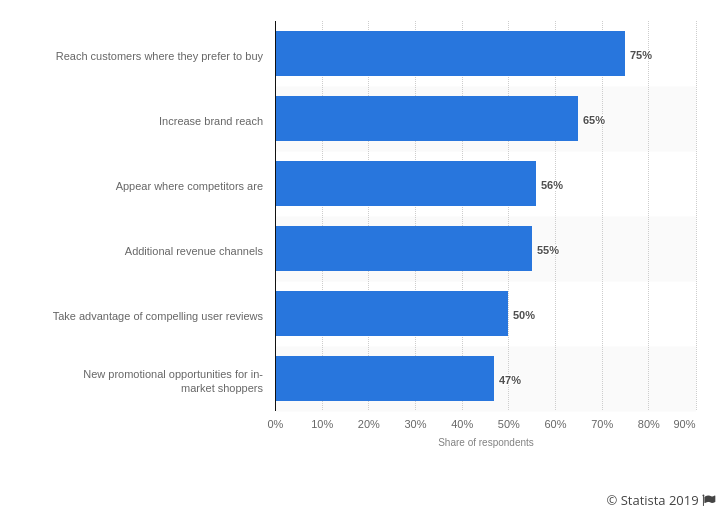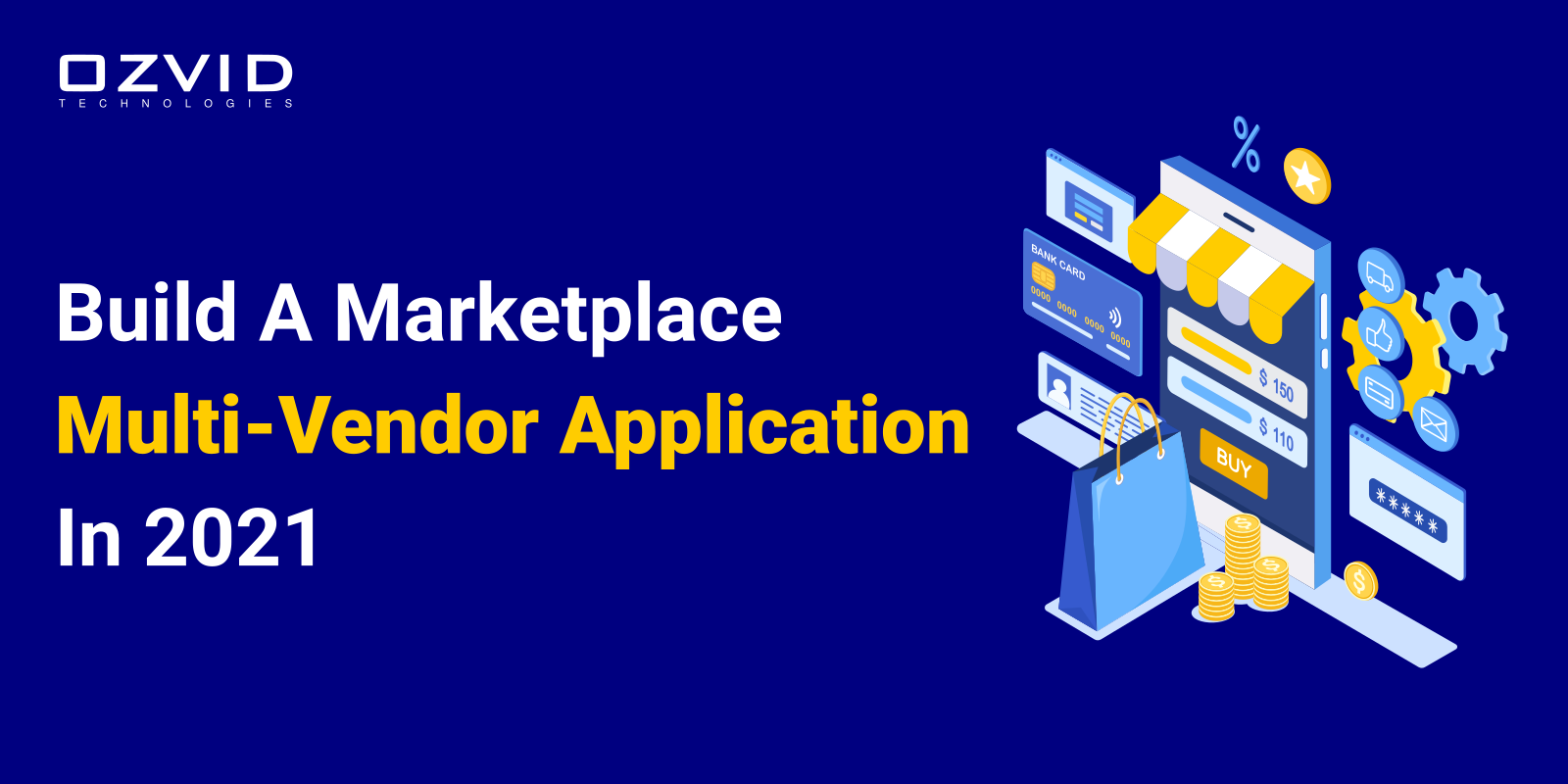For the customers, getting tons of buying options on a single platform is like a dream come true. We are highly addicted to online shopping, isn’t it true? Online shopping among users continues to boom at an exponential rate and has no looking back. Many popular multi-vendor platforms in the market include Shopify, Amazon, Flipkart, and more.
As per a report from Big Commerce, 48% of online shoppers prefer to buy online. Also, there is an impact of COVID-19 on the e-commerce industry, and people don’t prefer to go out shopping. With the huge trend, more businesses are now adopting such options to offer a seamless experience to the customers. Building a marketplace app is not an easy task unless you find a team of perfect developers and designers. Here is a blog with great tips that guides you to make a marketplace app, with other important information.
What is a Multi-Vendor Marketplace?
A multi-vendor e-commerce platform offers a platform to the users to avail all the services and goods. The platform eases the users and is becoming extremely famous.
The role of admin and vendor is huge that allows easy and seamless functioning of the app. The right action enhances the journey of the customer and helps in customer retention.
A Quick Overview of Multi-Vendor Marketplace Market
As per research from Grand View, the global e-commerce market value was $9.09 trillion in 2019, and it is expected to grow at 14.7% CAGR during the year 2020-2027. B2B and B2C e-commerce markets make the majority of the e-commerce market.
The statistics represent the common benefits of the company that it has with the e-commerce marketplace as per the marketing professionals.

Types of Multi-Vendor Marketplaces
1. B2B Marketplace
A business-to-business marketplace is a platform that allows vendors to sell their products directly to other businesses. One of the examples of such a platform is Walmart.
2. B2C Marketplace
Business to customers, as the name suggests, vendors sell their products to the customers. One example of such a platform is Amazon.
3. C2C Marketplace
Customer to customer is a platform where the customers can sell their products to other customers. One example of such a platform is OLX.
Benefits of a Multi-Vendor Workplace
1. Variety of Products
The users can browse unlimited products with different filters and advanced options. They can quickly filter out the categories of a brand they are looking for and buy the product instantly.
2. Customer Engagement
The marketplace apps allow the customers to get several offers, discounts, coupons and keep the customer engaged with their best products and services.
3. Easy Promotion
There are different sellers on the platform that can promote their stuff to potential customers as per their interests and niche. Different products to the customers are displayed as per their likes and preferences.
4. Seamless Inventory Management
You don’t have to maintain the entire warehouse of products. Vendors are responsible to maintain their inventories.
5. Brand Reputation
The marketplace platform allows you to have great recognition in the market. The platform has all the unique features your customers look for, they would turn to your potential buyers.
How to build a Multi-Vendor Marketplace App?
1. Business Model
The business model is the foremost thing that makes you aware of the development cycle. It plays the most crucial role. There are many platforms available such as Walmart, Amazon, and more that continue to thrive, and the reason being the business model. There are many ideas when it comes to the platform.
The single category of products offered under a multi-vendor platform is in trend. The user knows the platform niche and allows them to buy items as per their requirement. There are different business models. Let’s discuss a few of them:
- Buyers & Vendors: Business to customers just like Amazon works like a shopping mall for the customers. Simply install the app, they can buy the wide range of products available. Business to the business market platform allows the businesses to remain in touch with the vendors and get easy delivery. Some different buyers and sellers can list their products on the platform, and the customers can buy as per their preferences.
- Brands: This kind of marketplace is for brands that allow them to target their specific market. The reputed brands can have a different platform once they gain a reputation.
2. Why Multi-Vendor App Development?
As already discussed above the benefits of having a multivendor platform, there are many opportunities that it brings to your business. Here are a few reasons that one should consider developing a multi-vendor e-commerce app:
-
There are unlimited products available on the platform that attracts customers and keeps them engaged with the latest products.
-
It saves the cost that you might have to invest in managing inventory.
-
Allows you a quick and easy supply of products and services.
-
Allows you to target customers globally in a much efficient manner.
3. Features of Multi-Vendor Apps
There are many essential features that one must cover with e-commerce app development. Let us discuss one by one:
- Onboarding
Onboarding for the users should be easy. The users need to enter all their details such as name, email, and contact number for easy sign-in. Users can also sing-in via their social media credentials.
- Dashboard for Seller
It is one of the crucial features of the multi-vendor apps that manage the shipping cost, shipping methods, create special offers, and get sales reports. The dashboard has all the things listed in real-time that make things easier for the customers.
- Transactions
The customers can make easy payments via digital methods. The payments made by the users should be safe and secure to ensure that vendors can receive payments easily.
- Rating & Reviews
It is one of the most essential features of the multi-vendor app that allows users to review the product to help others before buying the products. The genuine feedbacks are usually checked by the customers before they buy the product.
- Inventory Management
The seller can manage the inventory so that they can restock the products instantly if it is in demand.
- Navigation
The users should be quickly being able to navigate their orders via the GPS tracking feature integrated into the platform.
4. Revenue Model
Different monetization strategies allow you to earn and generate revenue from the business. There are different revenue models such as:
-
Subscription Fee
It allows your users to buy subscription plans that can be monthly or annually. One of the examples is Amazon Prime that offers extra benefits for the users with a subscription plan. -
Commission
The commission is fixed per vendor that is a specific percentage for the business owners -
Advertising
The seller can advertise your product in the right manner to grab the attention of users and increase the business.
5. Technology Stack
It is essential to hire the right mobile app development company. And when it comes to a multi-vendor marketplace, it is essential to know which platform will be best suited for the development and the business to shine.
Technology stack has a huge impact on the user experience, and it directly affects user retention. Let us check the tech stack for logistics app development.
Frontend Development - HTML, JavaScript & React.JS
Backend Development – Ruby-on-rails
The Bigger Picture
Hope the blog brought clarity about the development of a marketplace platform. If you are looking to start your multi-vendor marketplace business app, then you have arrived at the right place. Check out OZVID Technologies for expert on-demand app development solutions.














Share this post on: